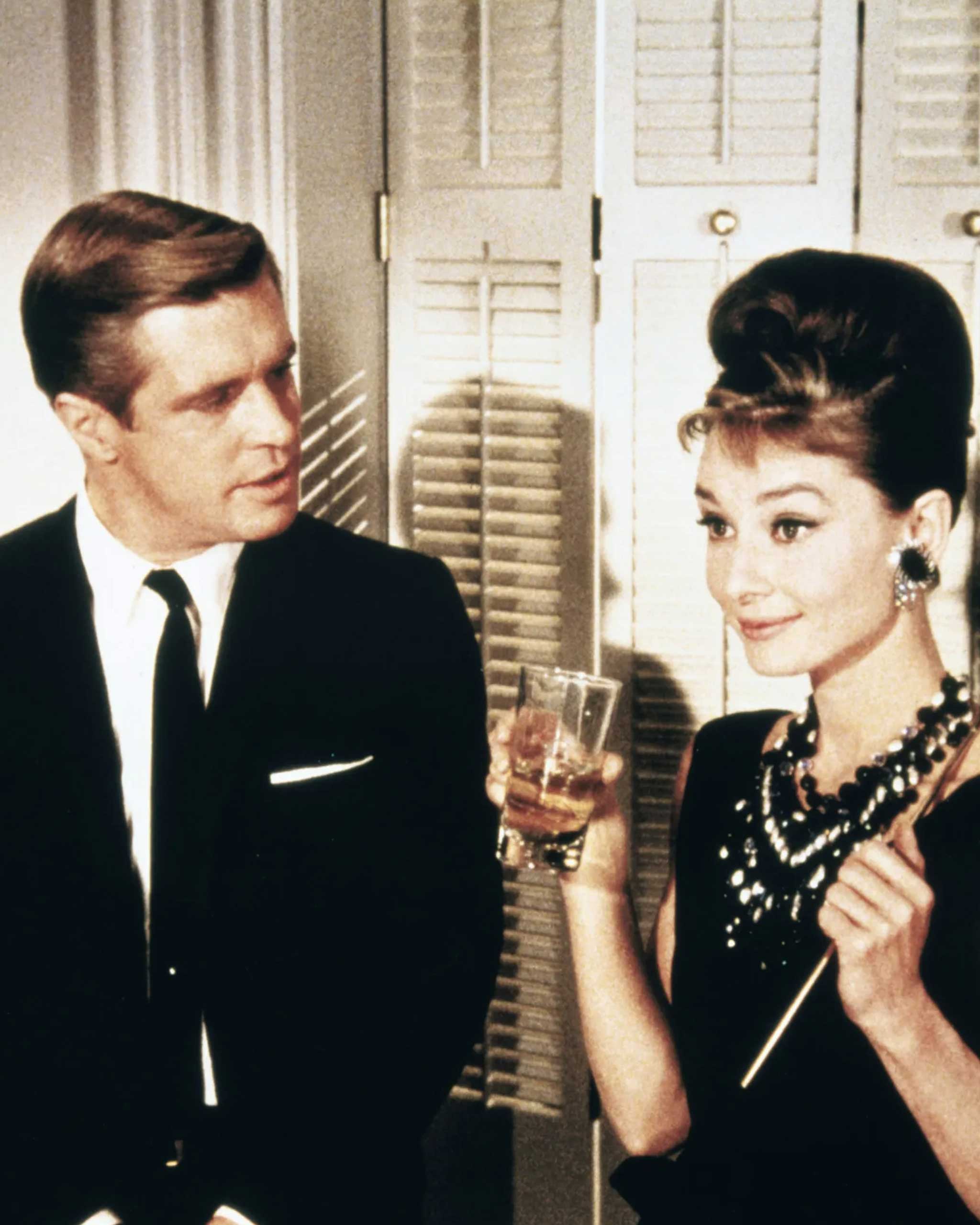Courtesy of Everett Collection
Not knowing what to wear is one thing, but having a strict dress code, like cocktail attire, splashed across an invite as you scramble for an outfit is another. It’s a familiar scenario: You’re invited to a wedding, an engagement party, or even just a nice get-together with friends, and the host requests this particular style of dress. It’s not formal but certainly not casual–making the risk of doing too much or too little pretty high.
While most of us know exactly what cocktail (or mocktail) hour is, the dressing piece of the occasion leaves a little more room for interpretation.
What is cocktail attire?
In the simplest of terms, it’s a semi-formal style of dress typically worn on early evening and late afternoon occasions. “Cocktail attire was first popularized in the 1920s as women in the U.S. moved into the public social sphere and sought to find more individuality and shed the more confining gender stereotypes of the Edwardian era,” Michelle Gabriel, graduate program director of Glasgow Caledonian New York College (GCNYC) tells Vogue. During the Edwardian era, women’s dress was elaborate, including corsets, long skirts, and layers. In the decade following, the style of dress worn by flappers was a step in a more freeing direction with shorter hemlines and looser silhouettes, but still filled with the same level of detail and adornment.
“French couturiers like Chanel and Schiaparelli, increasingly dependent on American clients, took on the concept of cocktail dressing,” Gabriel says. “They offered luxurious loungy dressing for hostesses of private, high-class cocktail gatherings. Hollywood films featuring Mae West and Greta Garbo, and growing international travel of the 30s, helped to popularize these looks.”
Still, it wasn’t until decades later that the name itself was popularized by none other than Christian Dior. At the time, cocktail hour was becoming the norm in households as women began to host parties between the hours of 6 P.M. and 8 P.M. According to the Metropolitan Museum of Art’s website, “Christian Dior was the first to name the early evening frock a “cocktail” dress in the late 1940s, and in doing so allowed magazines, department stores, and rival Parisian and American designers to promote fashion with cocktail-specific terminology.” Dior’s New Look collection, which included dresses and sets with cinched waistlines and voluminous skirts, defined a generation of style that was more versatile than ever before.
“Paris couturiers always have been an important source for U.S. fashion industry since the 19th century. However, when Paris was occupied during [World War II] that source was no longer available even as an inspiration,” couture historian Adnan Ege Kutay tells Vogue. “After the war, the fashion industry needed to flourish again and women were ready to buy new clothes.”
In the 1950s, cocktail dresses were often mid-calf length and made of fabrics such as black taffeta, satin, and chiffon; think Audrey Hepburn’s party look in Breakfast at Tiffany’s.
However, new trends emerged toward the second half of the century as young people began to include more freedom of expression in their dressing. In Clothing and Fashion: American Fashion from Head to Toe, the authors explain that “Mod styles dominated cocktail dressing for young women in the 1960s. Along with the mod style, it was acceptable to wear a dressy suit to cocktail parties, and for women going directly from cocktails to dinner, a matching jacket could be worn over a dinner dress. Subsequently, the cocktail party came to embrace many types of events, and as a result, dress codes varied widely.”
What does cocktail attire look like today?
What’s appropriate for a cocktail attire dress code can vary depending on the occasion, the time of year, and even the hosts. But there are some key rules to keep in mind. While you can undoubtedly wear trousers, consider leaving the denim in your closet, and pairing your pants with a dressier silk top or one that has a more sophisticated silhouette than a basic t-shirt.
Patterns, like florals, for a spring or summer wedding are totally acceptable, but make sure they’re appropriate. For example, some cocktail parties or events may specify that they would like guests to wear all black.
Cocktail attire offers some leniency when it comes to suiting. Collared shirts or ties aren’t required, and tops can be used as the statement part of the look (like a pop of color or a pattern). In some cases, though, a suit could be worn with a simple T-shirt.
Ultimately, if you need to wear cocktail attire to an event like a wedding, the number one rule is to err on the side of caution and use the dress code as permission to dress up a little more than usual.
This article was originally published on Vogue.com.
